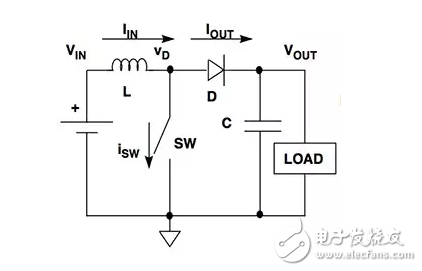
资料下载

具有集成电感的直流-直流电压转换器的优点和缺点
具有集成电感的直流-直流电压转换器的优点和缺点。
这是DC直流电压转换器的普及(“开关电源”)––由于效率高在宽的输入和输出电压范围––,芯片制造商也集中了很多研究美元挤压设备的基本组成模块。这些模块通常包括脉冲宽度调制(PWM)控制器和开关元件在一个单一的,紧凑的封装,减轻了设计工作的工程师。
然而,直到最近,它已被证明很难包括封装内的能量存储器件(电感器)。这决定了工程师必须指定,源和设计的电感器作为一个外围组件,增加复杂性和消费板空间。现在,新一代高频开关稳压器已启用使用更小的电感器,使器件被安置在内部元件供应商的包。
本文简要介绍了开关稳压器设计中的电感器的作用,然后再移动描述的技术优点和权衡选择一个集成电感的电源模块。

Anatomy of a switching regulator
Switching regulators use a switching element (typically one or two metal-oxide semiconductor field-effect transistors (MOSFETs)) and an energy-storage device (an inductor) to efficiently regulate an input voltage to a lower (“buck”) or higher (“boost”) output voltage.
The inductor performs a fundamental role in the switching regulator. In a buck regulator, when the transistor is powered, the magnetic field in the inductor builds up, storing energy. The voltage drop across the inductor (which is proportional to the duty cycle of the transistor) opposes (or “bucks”) part of the input voltage. When the transistor switches off, the inductor opposes the change by flipping its electromotive force (EMF) and supplies current to the load itself via the diode.
声明:本文内容及配图由入驻作者撰写或者入驻合作网站授权转载。文章观点仅代表作者本人,不代表电子发烧友网立场。文章及其配图仅供工程师学习之用,如有内容侵权或者其他违规问题,请联系本站处理。 举报投诉
- 相关下载
- 相关文章







